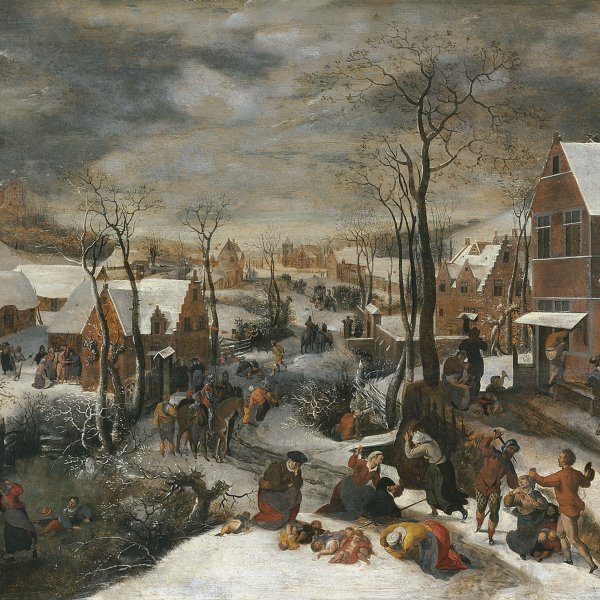Lucas van Valckenborch I (?)
Louvain, after 1535 -Frankfurt, 1597
Lucas van Valckenborch I was a member of a large family of painters from Louvain who left the southern Netherlands following the Spanish occupation and took refuge in Germany for political and religious reasons. The first reference to the artist dates from 1560 when he is registered as a painter in the guild of Saint Luke in Malines, while four years later he accepted Jaspar van der Linden as an apprentice. In 1566 Van Valckenborch fled first to Liège then to Aachen where his brother, the painter Marten van Valckenborch, was living. He returned to Antwerp between 1574 and 1575 and in 1579 became court painter to the Archduke Matthias von Habsburg, governor of the Spanish Provinces. Around 1582 Van Valckenborch followed his brother to Linz, after which both settled permanently in Frankfurt around 1592–93. From the large number of surviving works it would seem that Van Valckenborch established a flourishing studio in that city in which other members of his family probably also worked.
Van Valckenborch’s style is close to that of Pieter Bruegel who was ten years his senior. His most important works were landscapes although he also made significant contributions to the genre of portraiture. His landscapes combine a use of traditional Flemish compositions with sweeping panoramas presented from a high viewpoint, but they are based to a greater degree than those of his predecessors on a direct observation of nature and his landscapes include depictions of real places such as Liège, Burschied, Antwerp and Vienna. Van Valckenborch often mixed invention and reality, as can be seen in Spring Landscape with the Royal Palace at Brussels (Kunsthistorisches Museum, Vienna), in which the palace is located in an imaginary setting, and these combinations are frequently embellished with narrative elements derived from daily life. According to Van Mander, Van Valckenborch’s talents as a portraitist brought him to the attention of the Archduke and six different portraits of him exist by the artist, some of them life-size.
Van Valckenborch’s style is close to that of Pieter Bruegel who was ten years his senior. His most important works were landscapes although he also made significant contributions to the genre of portraiture. His landscapes combine a use of traditional Flemish compositions with sweeping panoramas presented from a high viewpoint, but they are based to a greater degree than those of his predecessors on a direct observation of nature and his landscapes include depictions of real places such as Liège, Burschied, Antwerp and Vienna. Van Valckenborch often mixed invention and reality, as can be seen in Spring Landscape with the Royal Palace at Brussels (Kunsthistorisches Museum, Vienna), in which the palace is located in an imaginary setting, and these combinations are frequently embellished with narrative elements derived from daily life. According to Van Mander, Van Valckenborch’s talents as a portraitist brought him to the attention of the Archduke and six different portraits of him exist by the artist, some of them life-size.




